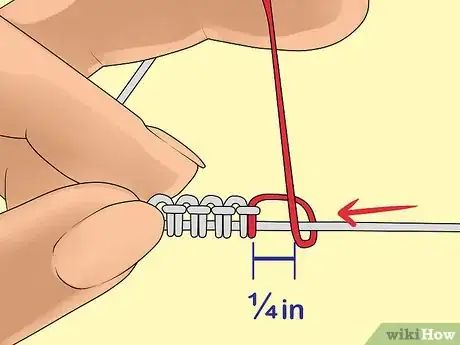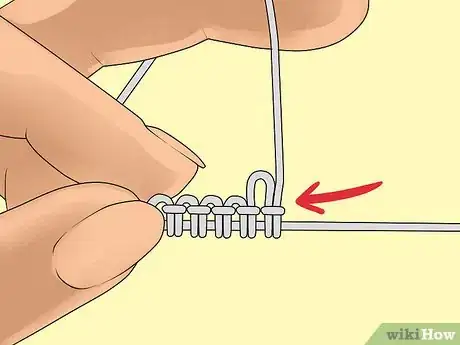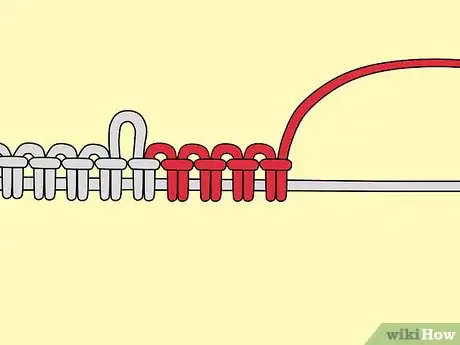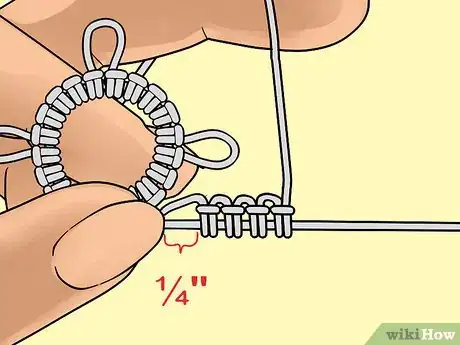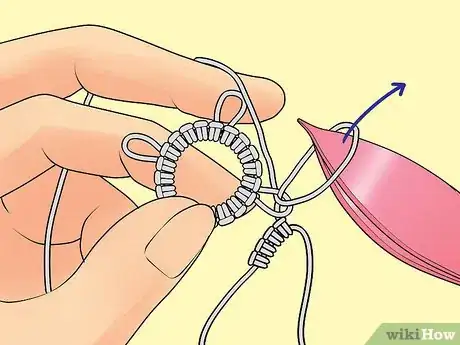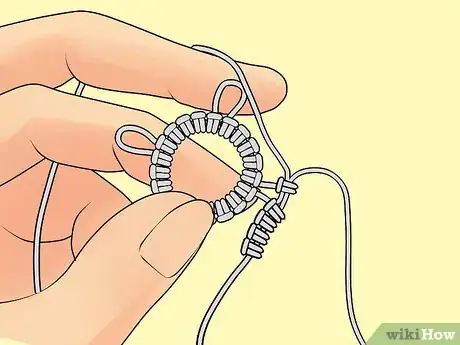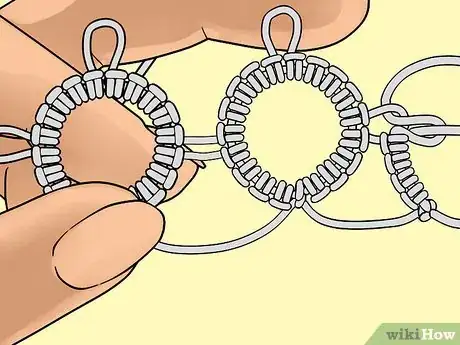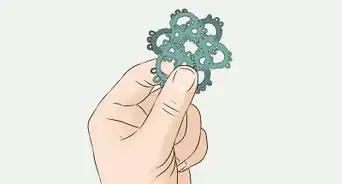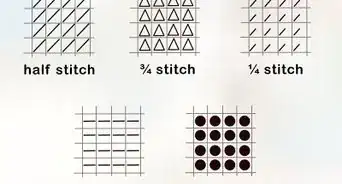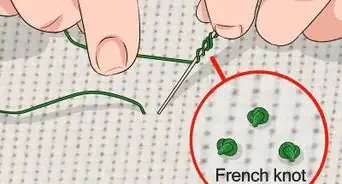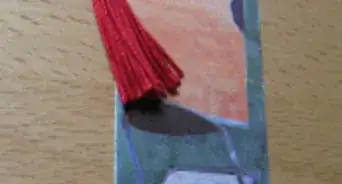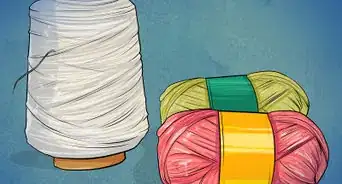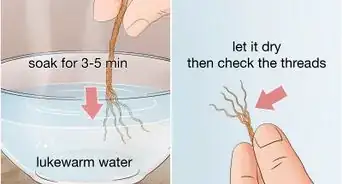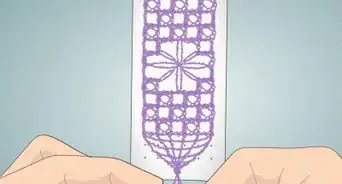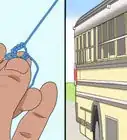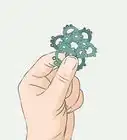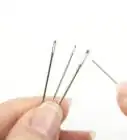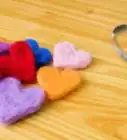X
wikiHow is a “wiki,” similar to Wikipedia, which means that many of our articles are co-written by multiple authors. To create this article, volunteer authors worked to edit and improve it over time.
This article has been viewed 97,183 times.
Learn more...
All tatting designs contain rings and picots. The ring forms the basis of the design. The picots are used for decoration and for joining. These directions are described in detail to help to make the steps clear in your mind. Once you have mastered this, you will be ready to read the same directions as they would appear in a tatting pattern. This tutorial includes the abbreviations for tatting terms to assist the beginner.
Steps
Method 1
Method 1 of 2:
First Ring
-
1Be aware that the working stitch always comes between the thumb and forefinger. In figures 12, 13, and 14, the fingers should come where the arrow points in the illustration. The drawings are made in this manner (with the fingers away from the working stitch) so that all the steps are clear.
-
2Start the first ring. Make four double stitches (ds).Advertisement
-
3Make the first half of a double stitch (ds). However, as you slide it into position, stop about 1⁄4 inch (0.6 cm) from the preceding double stitch (ds).
-
4Complete the double stitch (ds).
-
5Draw the entire stitch close to the first four stitches. The little loop formed from the space left between the stitches is a picot (p).
-
6Make four more double stitches (ds).
-
7Note that what was just created is written "1 picot (p) and 5 double stitches (ds)". A picot refers only to the loop and does not include the double stitch which fastens the loop.
-
8Make another picot and five double stitches (see previous step).
-
9Make a picot and four double stitches.
-
10Hold the stitches securely between thumb and forefinger of the left hand. Draw the shuttle thread tight so that the first and last stitches meet, forming a ring.
Advertisement
Method 2
Method 2 of 2:
Second Ring and Joining
-
1Wind the thread around the left hand in position for another ring.
-
2Make 4 double stitches 1/4 of an inch away from the ring just made.
-
3Insert the pointed end of the shuttle through the last picot of the previous ring and catch the thread encircling the left hand.
-
4Pull the thread through until there is a loop large enough to insert the shuttle.
-
5Pull the shuttle through the loop and draw the shuttle thread tight.
-
6Slowly raise the middle finger of the left hand to draw up the loop. This joins the new ring to the old one and counts as the first half of the next double stitch.
-
7Complete the double stitch.
-
8Repeat steps 6 to 10 under the first ring (previous section). Continue in this manner for each succeeding ring, repeating all of the steps in this section.
Advertisement
Community Q&A
-
QuestionWhere do I pull to tighten the second ring down? I keep ending up with a large loop of thread I can't get rid of.
 Holly PacierCommunity AnswerGrab your work by the last stitch you made, and try not to pinch it too tight. If you are unable to advance the thread any further and you still have slack, gently work the thread back out to widen the ring and check your stitches for mistakes, and your thread for knots. Sometimes, a ring will not close because the thread was twisted as you worked, which would cause it to kink up as you tightened the ring. Just keep working the thread slowly into the ring, loosening kinks as you find them. You may have to back and forth a few times, but keep at it.
Holly PacierCommunity AnswerGrab your work by the last stitch you made, and try not to pinch it too tight. If you are unable to advance the thread any further and you still have slack, gently work the thread back out to widen the ring and check your stitches for mistakes, and your thread for knots. Sometimes, a ring will not close because the thread was twisted as you worked, which would cause it to kink up as you tightened the ring. Just keep working the thread slowly into the ring, loosening kinks as you find them. You may have to back and forth a few times, but keep at it. -
QuestionWhat is a split ring?
 Holly PacierCommunity AnswerA split ring is an advanced tatting technique used for creating smooth central rings in some doilies and for hiding thread ends in certain patterns. It involves using either a second shuttle, or simply a long thread end that to make reversed double stitches on the first shuttle thread. The result is a teardrop shaped ring with two working thread ends instead of one.
Holly PacierCommunity AnswerA split ring is an advanced tatting technique used for creating smooth central rings in some doilies and for hiding thread ends in certain patterns. It involves using either a second shuttle, or simply a long thread end that to make reversed double stitches on the first shuttle thread. The result is a teardrop shaped ring with two working thread ends instead of one.
Advertisement
Things You'll Need
- Tatting shuttle
- Tatting thread
References
- Reichl, Miriam B., editor (1952), Needlecraft for the Home, New York: The Homemaker's Encyclopedia, Inc. - Book in public domain. Copyright not renewed. Original source of article.
- See also Thérèse de Dillmont, Encyclopedia of Needlework, public domain resource (source of introduction illustration).
About This Article
Advertisement


